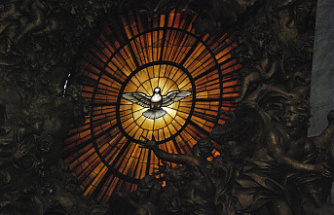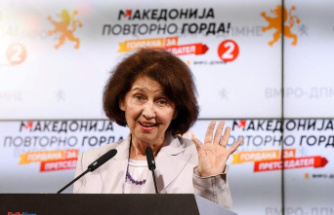The echo achieved by the call for a civic march by the change scheduled for November 20 on the island has caused the fulminating reaction of the Government of Miguel Díaz-Canel, with which he intends to avoid another social outbreak as the one happened on July 11 . The revolution has decreed that date as "National Defense Day", which includes two previous days of military maneuvers "with the participation of headers, leaders and command and management bodies."
With resolution 001, Castroism announces the militarization of a country where armies and police exert pressure and constant presence against society. "Let's be the nightmare of those who seek to snatch our dreams," said Díaz-Canel to paraphrase Che Guevara.
"Faced with the citizenship of our march, they respond with the threat of tanks," the dramatist Yunior García Aguilera, leader of the collective Archipelago, who, together with the Council of the Democratic Transition (CTDC) are the main promoters of the peaceful protests proposed for The month that comes, when Cuba will have reopened its borders for international tourism.
"In case someone still had doubts about the authoritarian and violent nature of those who control power in Cuba, we will continue firm the path of civility and peace. Weapons, no. Rights!", The artist riveted.
The strategy followed up to now for the conveners, with the use of official channels, and the repercussion of the initiative, both in social networks and in the street, have forced the revolution to counterprogram as they usually do the Chavista authorities. So far they have presented the requests to go out into the street in seven different provinces.
In others, as in Santiago de Cuba, his representatives were arrested and beaten. "Two civil dressed agents came out at the pace by holding me down the neck to immobilize myself," he confirmed to the world Dariem Columbia, leader of the CTDC. Already in freedom, the activist confirmed this newspaper the support they are finding. "I really did not think it was going to reach so much flight, people on the street not only talk about that, we also feel the support, the level of call is immense and they know that they have no way of stopping this national march, so the ads of Last night (Thursday). Things are changing in the heads of young people since 11-J, "Columbié concretted.
"The State must respect the right to the meeting and the peaceful manifestation and cease repression," Manuel Cuesta Morúa, another of the CTDC leaders.
At the forefront of the Transition Council Figure José Daniel Ferrer, leader of the Patriotic Union of Cuba (UNPACU), captured since 11-J, as well as the artist Luis Manuel Otero Alcántara, who heads the San Isidro movement. The artist, one of the symbols of freedom in Cuba, is on hunger strike since September 27 in Guanajay's high security prison, where he was transferred after being arrested during the historic day of 11-J .
"We demanded Diaz-Canel Veridic Information from the Health State of Awareness Prisoner Otero Alcántara and its immediate and unconditional liberation," Clamor Erika Guevara-Rosas, director for the Americas of Amnesty International. The artist has just overcome the Covid-19, acquired between bars, which has not prevented him from being transferred to a punishment cell. The magazine 'Time' has chosen the Cuban activist between the 100 most influential personalities throughout 2021.
Date Of Update: 09 October 2021, 16:55











